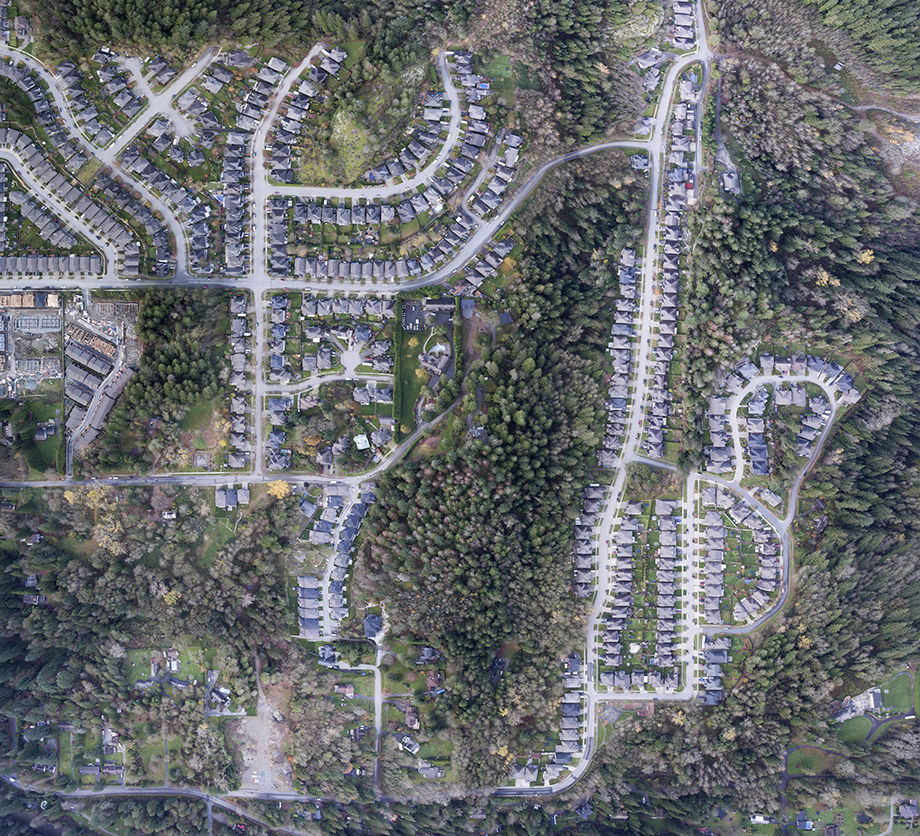
PLUS TAKE BIG
-
info
2016
photo installation
45” x 40” mounted on head board of king sized bed
elevated by unprocessed tree rounds
The house price bubble expands as urban development continues to grow in the lower mainland of British Columbia, which contributes to greater carbon emissions and global warming. Demand for property in Vancouver and it’s neighboring municipalities are driving up the housing market, this is accompanied by low mortgage rates. Increased household debt and high house prices poses risks of financial stability. Vancouver and Toronto are especially vulnerable to what the Organization for Economic Cooperation and Development (OECD) calls “a disorderly housing market correction”. Bedroom communities generally consume more energy, and emit more carbon dioxide due to their reliance on mechanized forms of transportation. Spacious single family homes on the periphery of city densification pushes a need for automobiles, which have a negative effect on climate change. Big homes also require more natural gas to heat in the winter and more electricity to cool in the summer. Urban sprawl has both economical and environmental impacts. King size homes and personal cars are two of the many staples in bedroom suburbs. How can city planners and urban developers design sustainable suburbia?